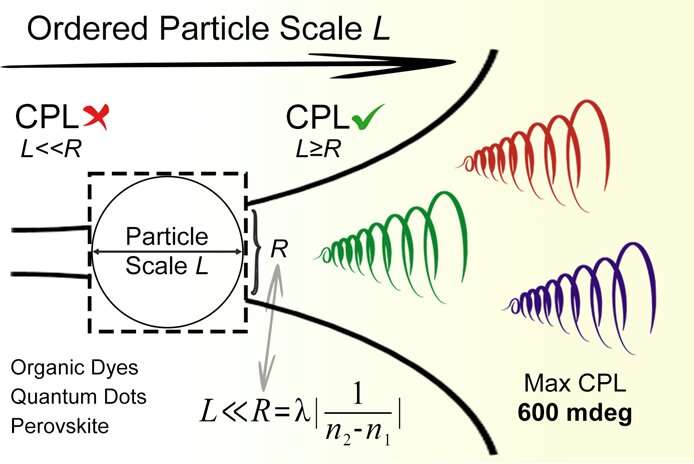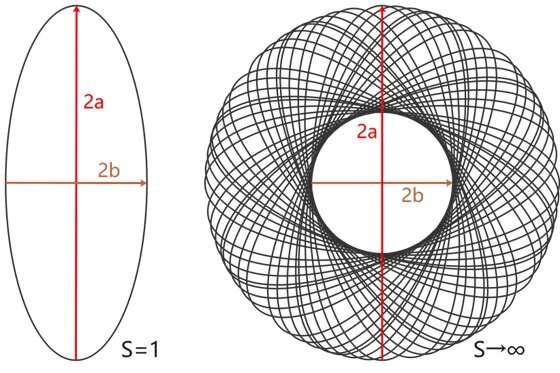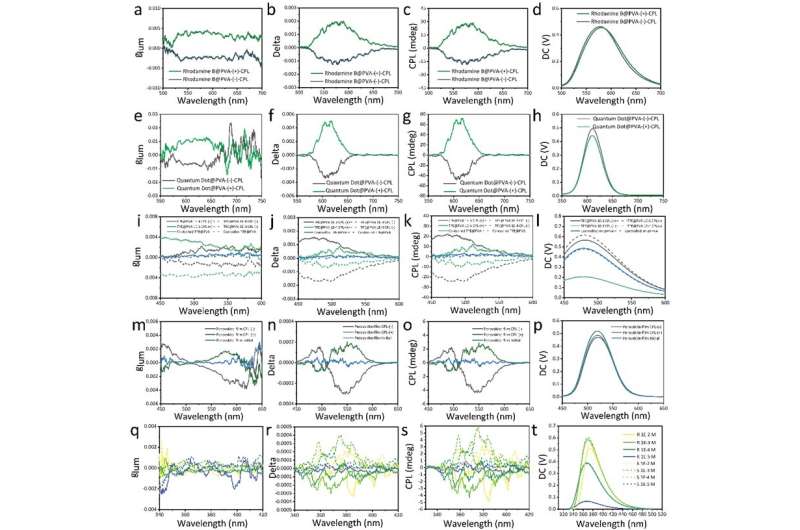This article has been reviewed according to Science X's editorial process and policies. Editors have highlighted the following attributes while ensuring the content's credibility:
fact-checked
trusted source
proofread
Exploring the size dependence of circularly polarized luminescent materials

In the development of chiral materials, electron microscopy, polarimeters, or other spectroscopic methods are commonly used to analyze and discuss the chirality or asymmetry of materials. With the continuous development of circularly polarized luminescence (CPL) spectroscopy, CPL spectroscopy has become an important technique for characterizing the chirality of luminescent materials.
Studies have shown that in addition to chiral structures inducing CPL luminescence, non-chiral ordered structures can also have a significant impact on CPL signals. These non-chiral structures mainly affect CPL signals at the micro or macro particle scales, and it is difficult to express their influence on CPL signals through simple universal macroscopic measurement methods.
Recently, based on research results in the fields of polarized light and molecular spontaneous radiation, Professor Xiang Ma's research group in East China University of Science and Technology designed experiments and established a model based on the scale effect of ordered media to quantify the influence of media order on the CPL signal.
Compared with CPL emission induced by the potential chiral excited state of molecules, the scale effect of ordered media on the CPL signal of luminescent materials is also significant. The study also found that the measurement entropy in CPL measurement is the dominant factor determining the isotropy and anisotropy of CPL signals.

L is the transmission distance (anisotropic scale) in a uniform medium, and R is the critical scale of the scale effect. When L << R, the anisotropy of the medium can be ignored for CPL signals; under other conditions, the anisotropy of the medium needs to be considered for CPL signals.
The scale effect model based on scalar theory can not only provide an explanation for the CPL emission induced by chiral assembly of non-chiral material but also prove that the scale effect of the mirror image chiral spiral assembly structure media can induce CPL signals with opposite symbols and equal intensity.
The difference between CPL and linearly polarized light (LPL) is the phase difference between their electric vectors. Researchers found that the CPL signal measured in the experiment is mainly the CPL component in the general elliptically polarized light signal. This indicates that the difference between anisotropic and isotropic signals is very small when the luminescent material spontaneously radiates polarized light.
The phenomenon can be explained by measuring entropy, and a simplified illustration is established to help understand the concept of measurement entropy. When the measurement entropy is small, the measured CPL signal is anisotropic, and the size of the CPL signal depends on the long and short axes of the corresponding ellipse; when the measurement entropy is large, the measured CPL signal is isotropic.

In this study, the authors developed a highly versatile strategy to study CPL spontaneous radiation materials with controllable CPL emission wavelength and controllable signals and introduced anisotropy to affect CPL signals using the thin film stretching method (PVA film). Different luminescent materials with different mechanisms were used to discuss the effect of macroscopic anisotropy on CPL signals, including microdispersion and microaggregation states.
The untreated PVA film had no CPL signal. The researchers used materials such as Rhodamine B, CdSe quantum dots, aggregation-induced luminescent dye tetraphenylethene (TPE), and perovskite luminescent film to verify this strategy and found that the prepared materials generally had CPL signals, and the luminescence mechanism had no effect on CPL signals.
The study is published in the journal National Science Review.
More information: Siyu Sun et al, Scale effect of circularly polarized luminescent signal of matter, National Science Review (2023). DOI: 10.1093/nsr/nwad072
Provided by Science China Press





















